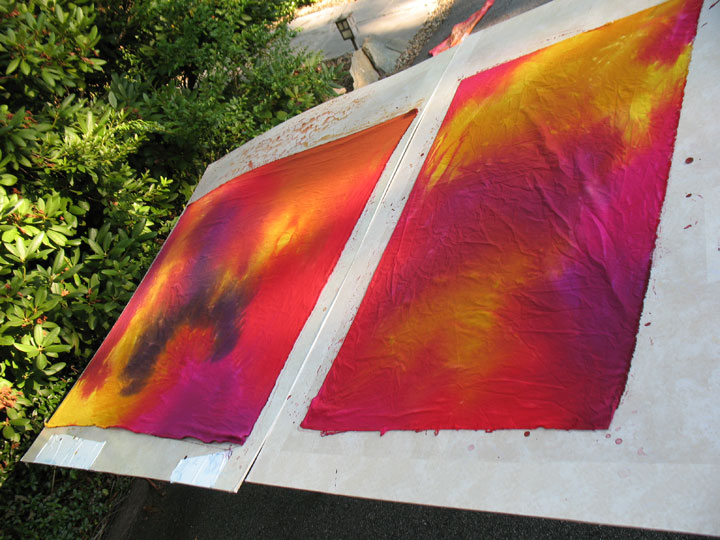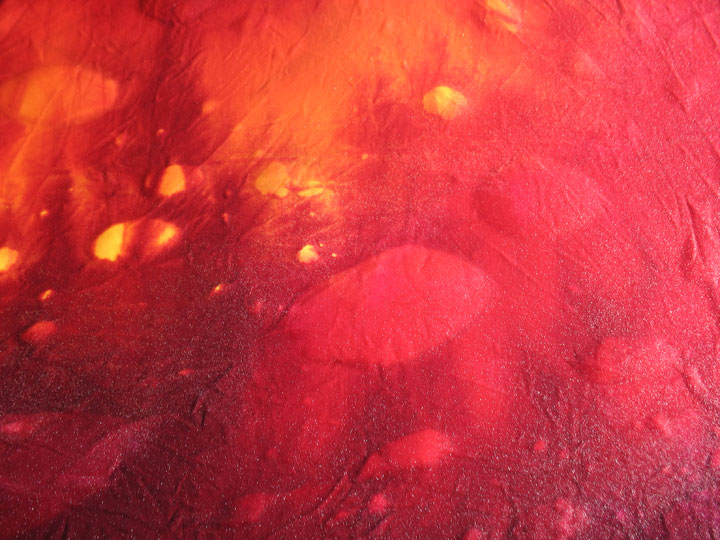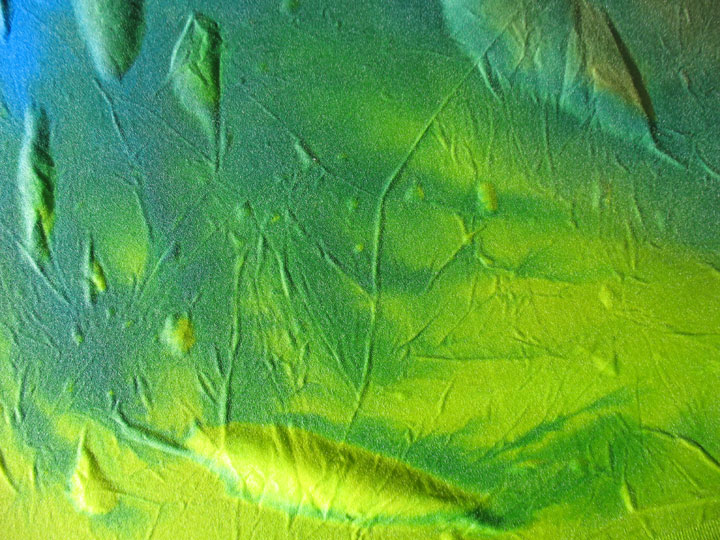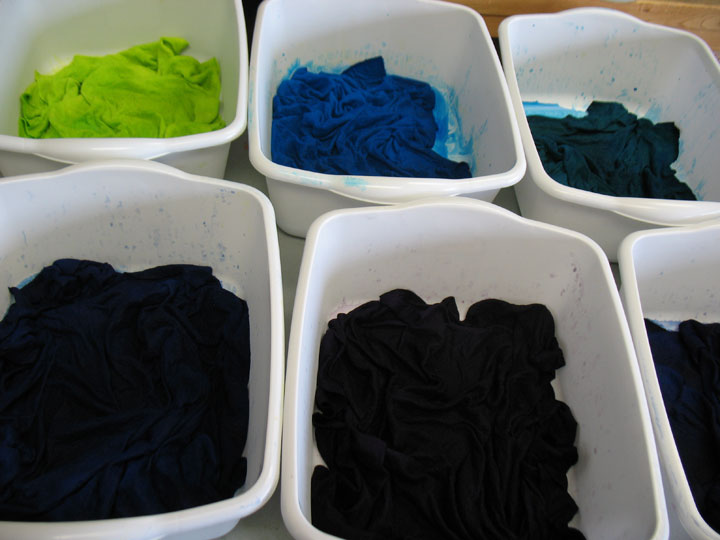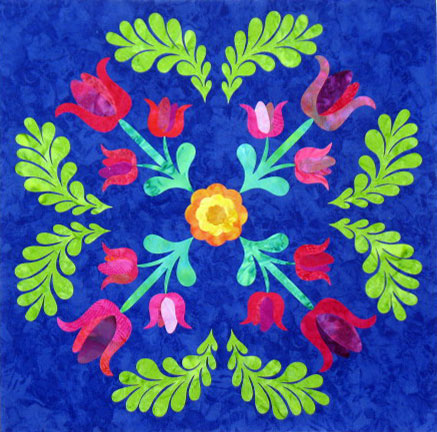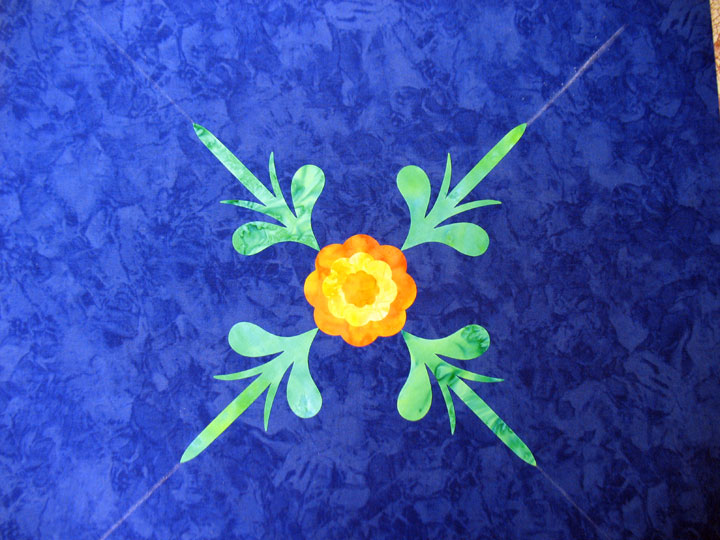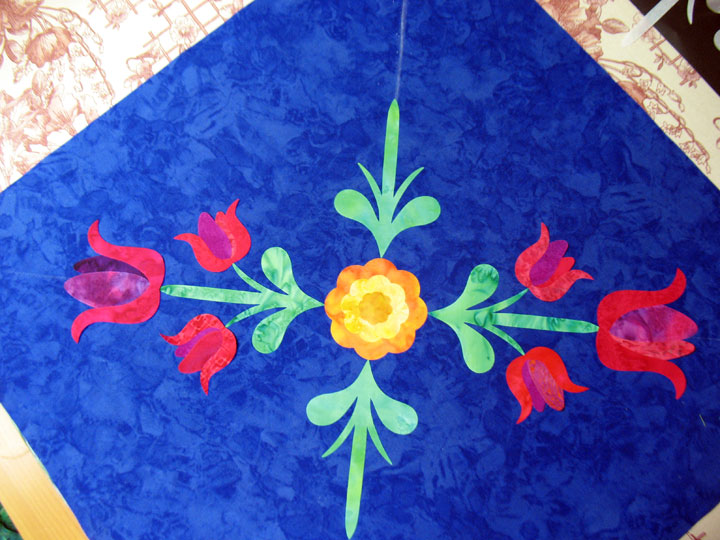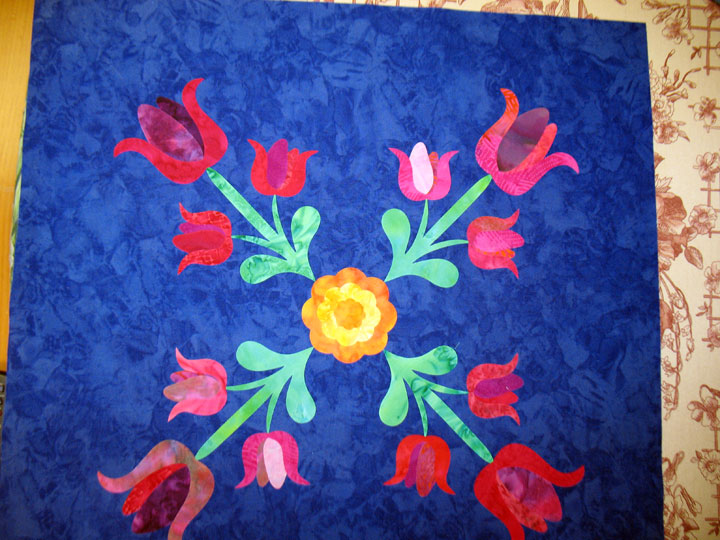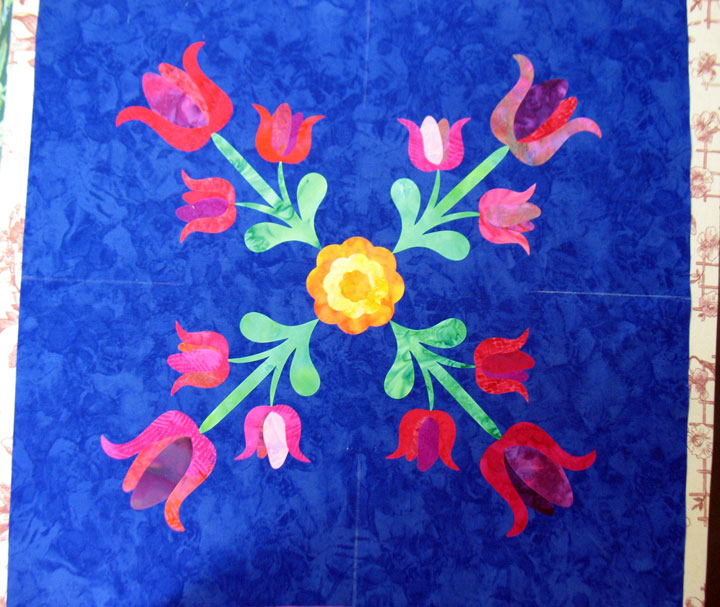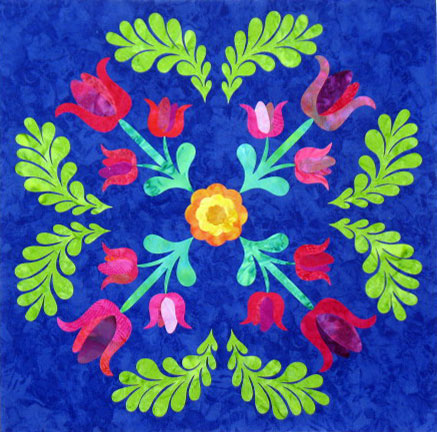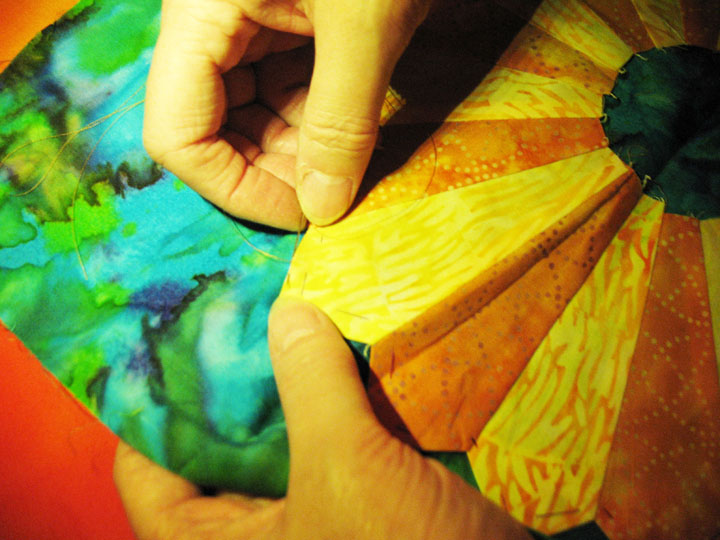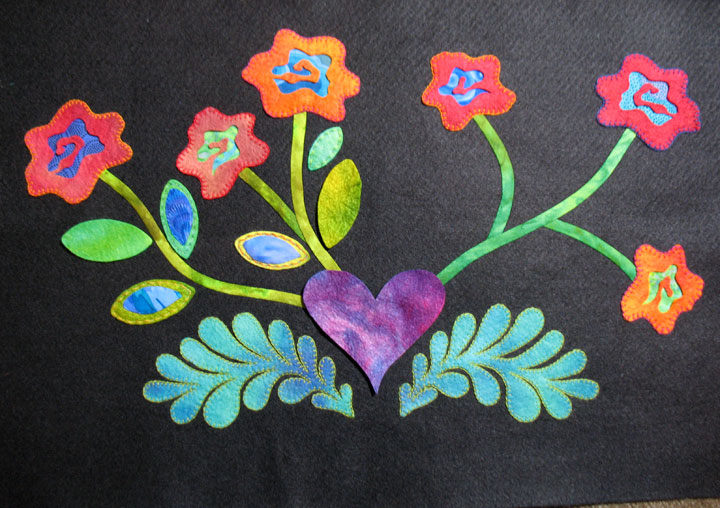A Colorful Day and the Beam N Read Light Winner!
I had the pleasure of spending many hours dyeing fabrics before I left North Carolina. Dyeing is always an exhilarating experience as colors come to life right in front of your eyes:
…and these are created by direct application of dye to damp fabrics, resulting in subtle blending and bleeding of colors into one another:
I just let these dye platters sit in the sun until they dry. Here are a couple of close ups of the wet fabrics as they bake in the sun. Notice the wonderful effects that occur from the air bubbles:
My favorite cotton sateen fabric for dyeing is now Ultra Sateen by Robert Kaufman. It takes the color so vividly (even the off white does) and it’s just a tad heavier so it has a wonderful drape to it. And here are some tubs of bamboo/rayon blended felts that are soaking up some great color as well:
I can’t wait until the next time I can get my hands into a dye bath!
In the meantime, I’ve heard back from the winner of the Beam N Read Light, so I can announce it here! Congratulations to Brita Pingry of Crossville, TN! Check out her blog to see all the fun quilting stuff she is up to!



